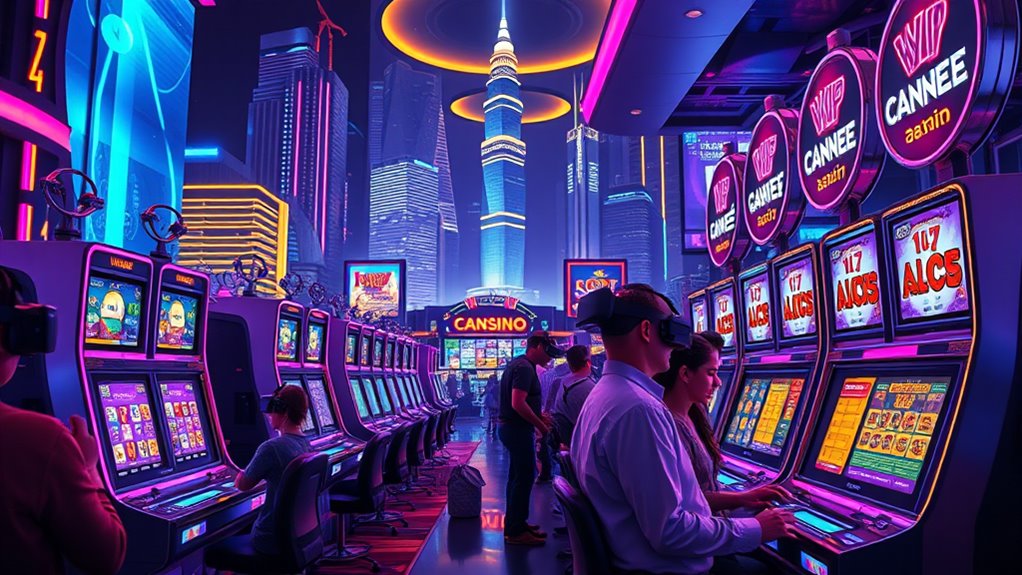Apr 13, 2025
The Future of Gambling Legislation: Emerging Trends and Challenges
You’re facing a rapidly evolving landscape of gaming regulations, driven by emerging trends in online and mobile betting. Technology innovations raise questions about legitimacy, security, and data privacy. As you navigate this complex environment, you’ll need to balance revenue generation with responsible gaming practices and address the issue of problem gamblers. To stay ahead of the curve, understanding these challenges and trends is essential. Exploring these key areas will provide a deeper understanding of the future of gaming legislation.
The political landscape surrounding gambling is constantly evolving, with new technologies, changing social attitudes, and emerging challenges. Explore the potential future of gambling legislation with Fantabettiamo.

The Rise of Online and Mobile Betting: A Catalyst for Change
The proliferation of smartphones and high-speed internet has transformed the way people gamble, with online and mobile betting platforms becoming increasingly popular.
As you navigate these platforms, you expect a seamless user experience, and operators are investing heavily in mobile security to protect your sensitive information.
Gaming accessibility has also improved, allowing you to place bets anywhere, anytime.
However, regulatory compliance remains a challenge, as governments struggle to keep pace with the rapid growth of online and mobile betting.
Market expansion is driving innovation, but consumer protection remains a top priority.
As the industry continues to evolve, you can expect stricter regulations and more robust safeguards to protect your interests.
The balance between innovation and regulation will shape the future of online and mobile betting.
The Role of Technology in Shaping Future Gaming Regulations
As online and mobile betting platforms continue to push the boundaries of innovation, technology is playing an increasingly important role in shaping the regulatory landscape.
You’re seeing new forms of payment, such as virtual currencies, being introduced, which raises questions about their legitimacy and security. Data privacy is also a pressing concern, as you’re required to provide sensitive information when creating accounts and making transactions.
Regulators must now navigate these complexities and create frameworks that protect consumers while fostering innovation. However, striking the right balance between protection and freedom will be a challenge.
You can expect to see more emphasis on encryption, secure payment processing, and consumer education as regulatory bodies try to keep pace with the rapid evolution of technology.
Addressing the Issue of Problem Gamblers: Stricter Regulations or Education?
Because problem gamblers pose a significant risk to themselves and others, addressing this issue has become a pressing concern for regulators and industry stakeholders.
You’re faced with two primary options: implementing stricter regulations or investing in education.
On one hand, stricter regulatory approaches can help limit access to gaming services for those at risk. Self-exclusion policies, for instance, can prevent problem gamblers from engaging in further gaming activities.
On the other hand, educational programs can increase problem awareness and promote responsible gaming practices. Support networks can also provide essential assistance to those struggling with gambling addiction.
Ultimately, a balanced approach that combines both stricter regulations and education may prove the most effective in addressing the issue of problem gamblers.
Finding a Balance Between Revenue Generation and Responsible Gaming Practices
While generating revenue remains a primary objective for gaming operators, you must also prioritize responsible gaming practices to maintain a positive reputation and minimize the risk of regulatory repercussions.
To achieve this balance, you’ll need to implement revenue sharing models that promote fair distribution of profits and invest in ethical marketing strategies that don’t target vulnerable populations. This includes using data analytics to monitor player behavior and prevent excessive spending.
By adopting these measures, you can reduce the risk of regulatory penalties and maintain a competitive edge in the market.
Ultimately, finding a balance between revenue generation and responsible gaming practices is essential for long-term success in the gaming industry. It requires a proactive approach to social responsibility and a commitment to transparency and accountability.
Navigating the Complexities of Cross-Border Gaming Regulations and Enforcement
You’ve achieved a balance between revenue generation and responsible gaming practices, but your work is far from over – now it’s time to tackle the intricate world of cross-border gaming regulations and enforcement.
As you navigate this complex landscape, you’ll face jurisdictional challenges that can make compliance a formidable task. To overcome these hurdles, you’ll need to develop effective compliance strategies that address the varying regulatory requirements of different countries.
Regulatory harmonization efforts are underway, but you can’t wait for a unified framework to emerge. You must stay ahead of the curve by investing in cross-border enforcement expertise and fostering collaboration with regulatory bodies.
More Details